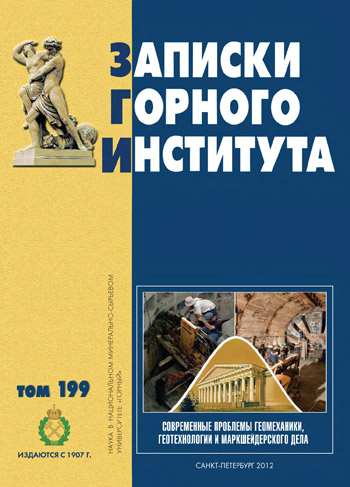Complex method of assesing mechanical condition of rocks in vicinity storehouses of radioactive waste
About authors
- 1 — Ph.D., Dr.Sci. professor National Mineral Resources University (Mining University)
- 2 — Ph.D. associate professor National Mineral Resources University (Mining University)
- 3 — Ph.D. research assistant National Mineral Resources University (Mining University)
Abstract
Radioactive waste received by manufacture of electric power requires a highly reliable burial place. One of the most perspective types of storehouses is underground developments in adjournment to soluble salts, created by dissolution through chinks from the surface. Existing requirements to a burial place of radioactive waste are described as key aspects of a complex method of an assessment of a mechanical condition of rocks in vicinities of chambers- storehouses in seismically active areas which are potentially suitable for storage and burial place of waste are stated.
Область исследования:
(Archived) Geotechnology for development of solid mining fields
Keywords:
radioactive waste
salts
storage and burial places
chambers of underground dissolution
seismically active areas and complex method
References
- Kochkin B.T. Geoecological approach to selectionof the nuclear disposal areas. Moscow, 2005.
- Mozer S.P., Kurtukov E.B. Rock mechanics: basic physics and mechanism of occurrence of geomechanical processes in underground mining. Saint Petersburg, 2009.
- Technical-scientific contributions on the topic ofnuclear waste management. NAGRA. Bulletin No 35. 2004.
- Ian Hore Lacy. Nuclear Electricity. Sixth edition.2000.
- Conceptual Design for a Deep Geological Repository for Used Nuclear Fuel. 1106/MD18085/REP/01. 2002.
Similar articles
Method for determining the vertical and strain displacement using laser-scanning systems
2012 V. N. Gusev, M. G. Vystrchil
Determining of encumbranses on the territory of Kirovsky district of Saint Petersburg
2012 E. N. Bykova, Yu. V. Chernetskaya
About the necessity of accounting of geodinamically active fractures zones in cadastral valuation оf settlement earths
2012 V. A. Kiselev, O. A. Tributs
